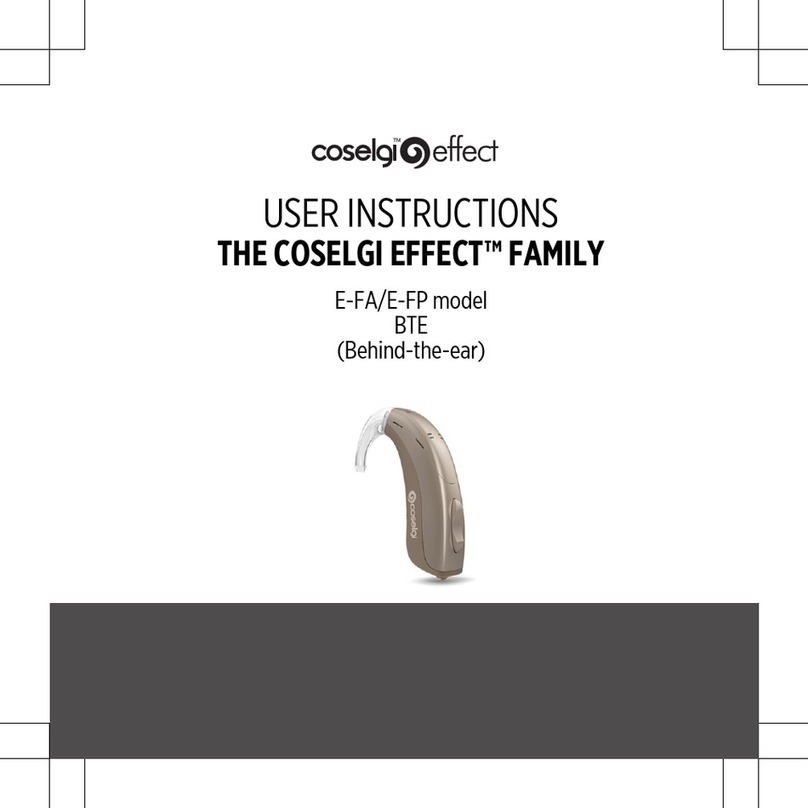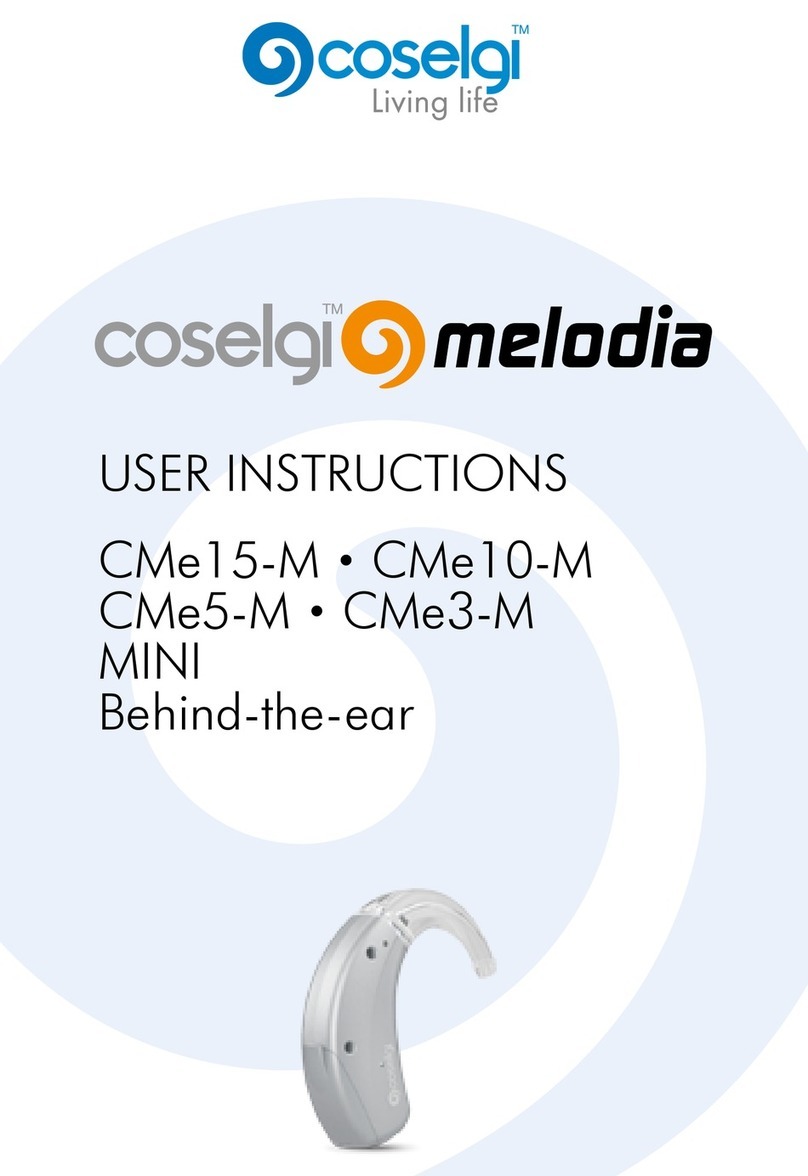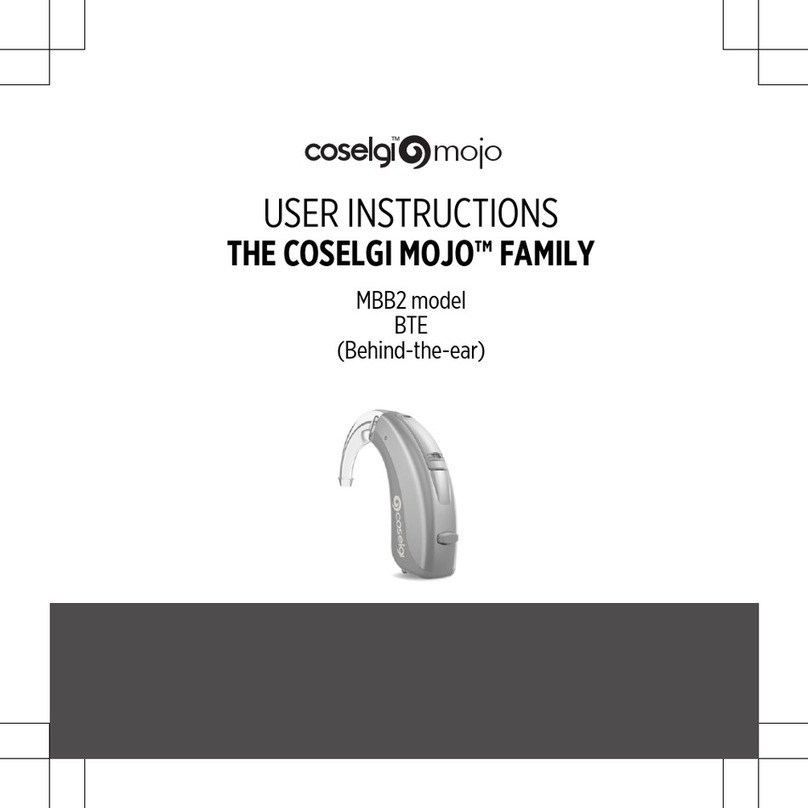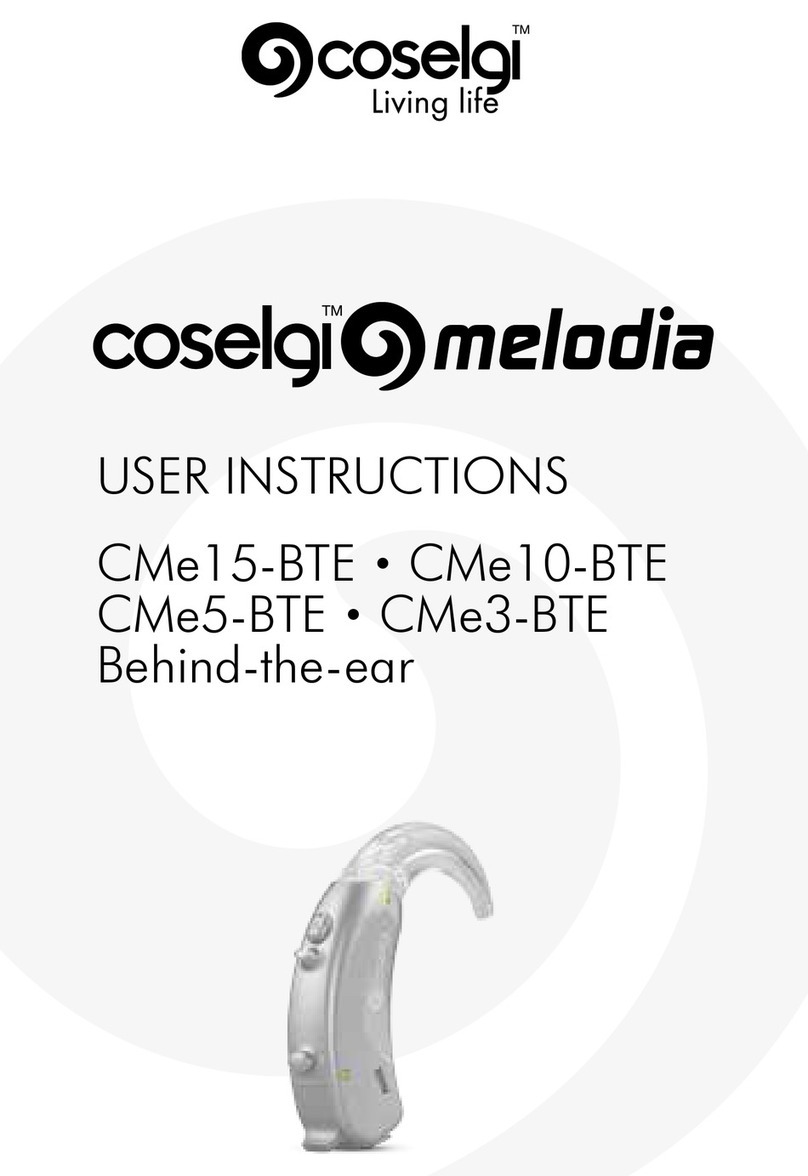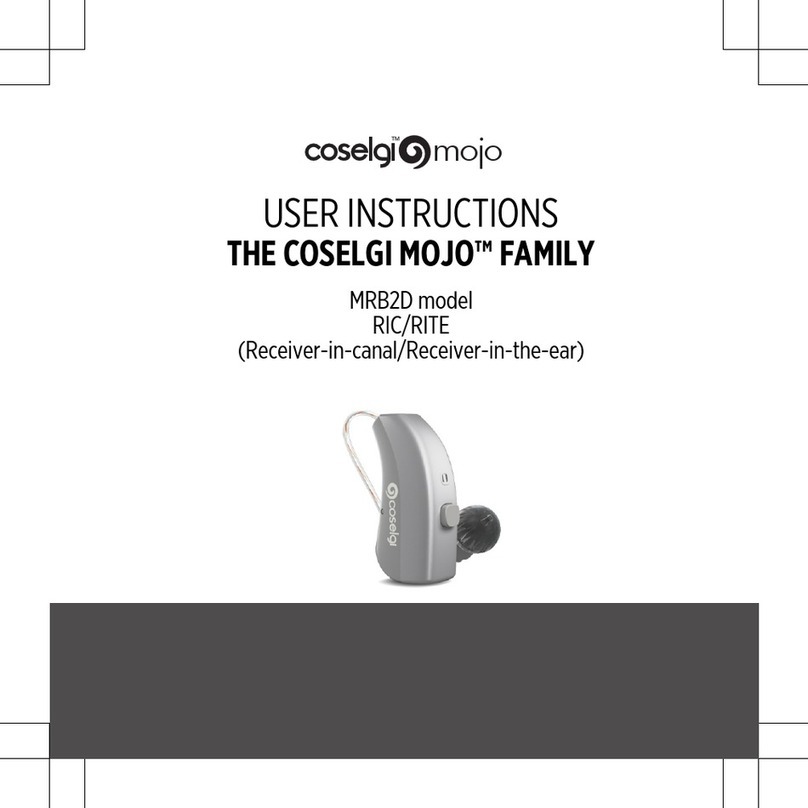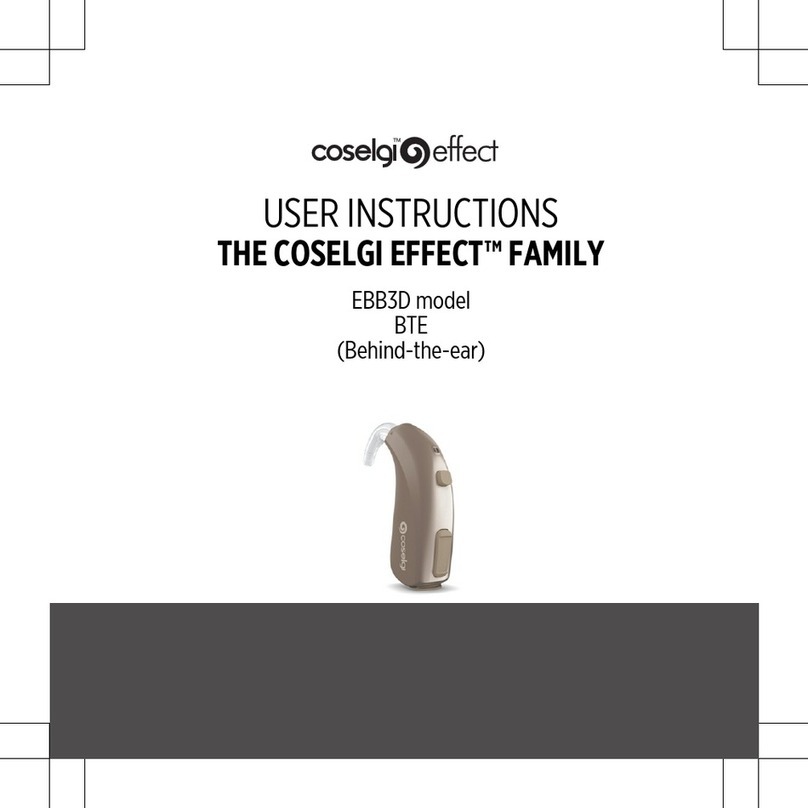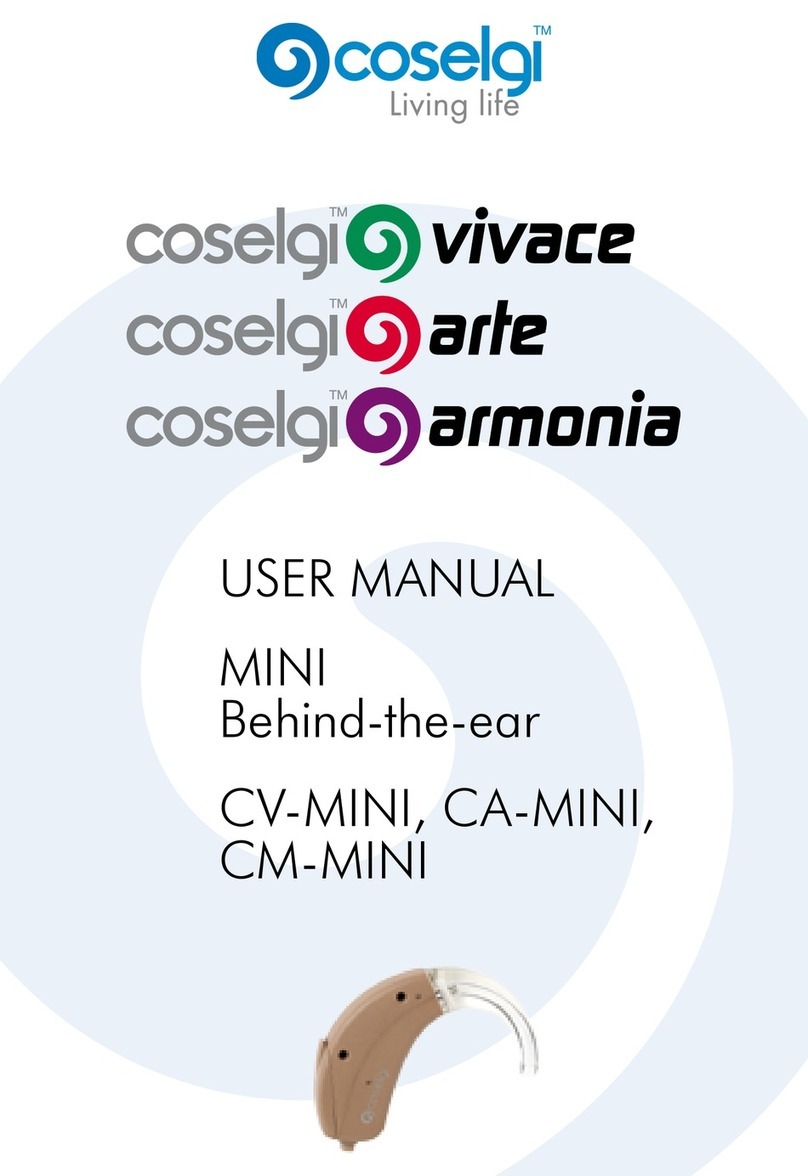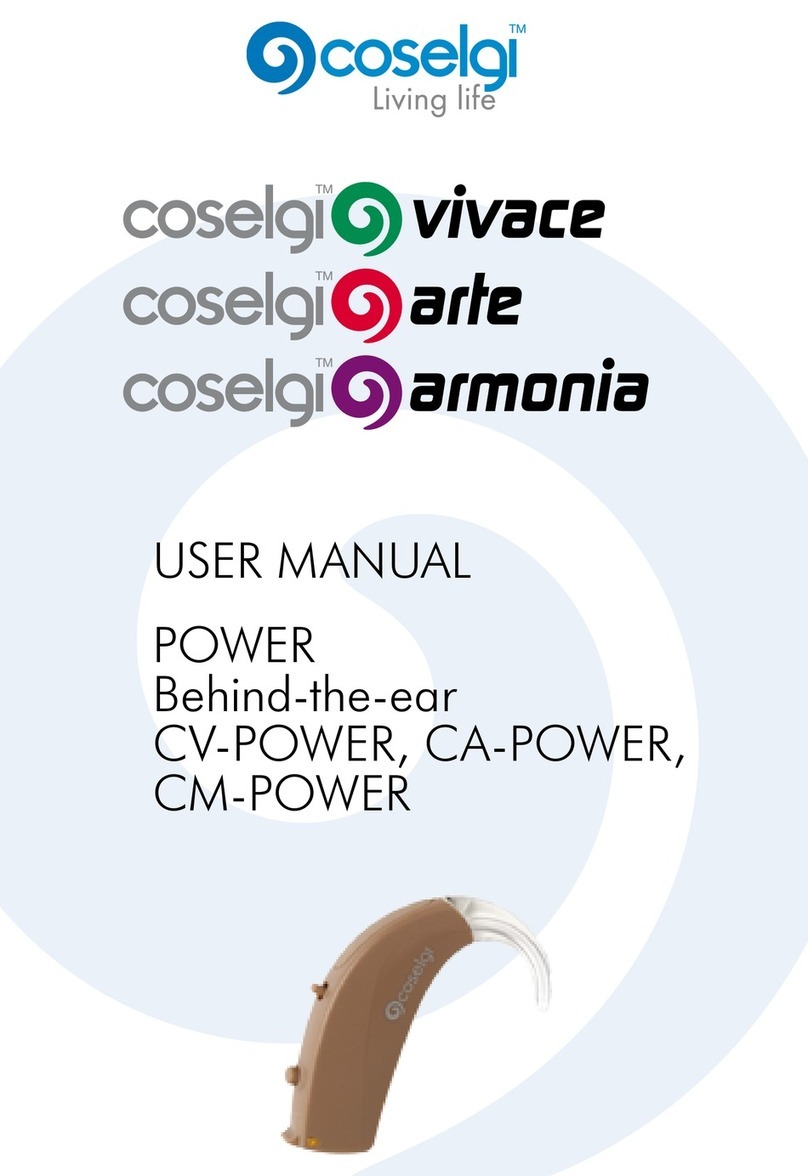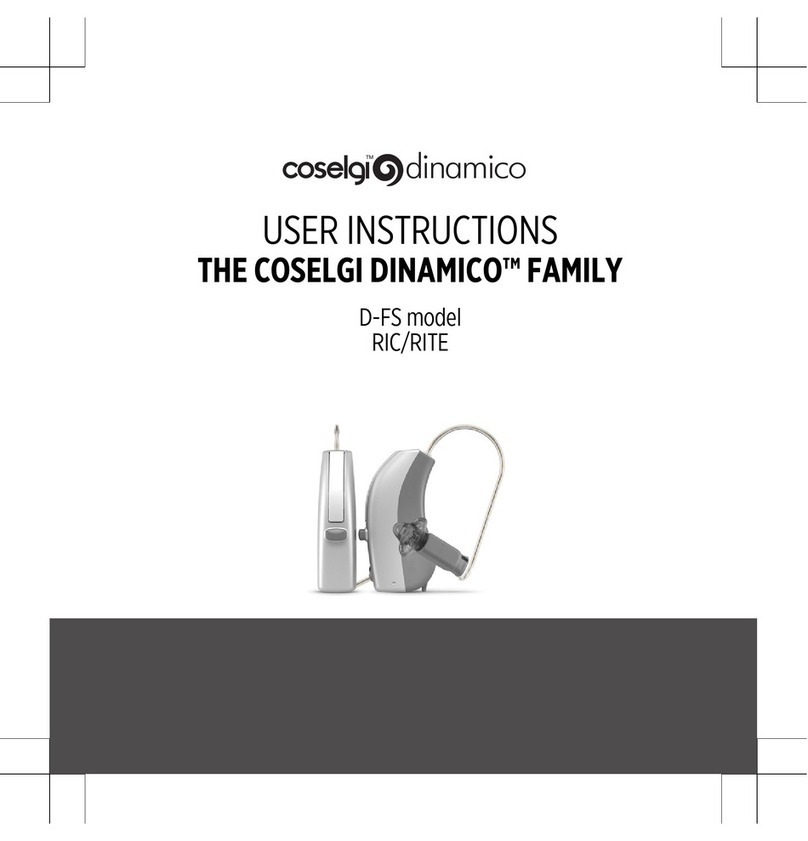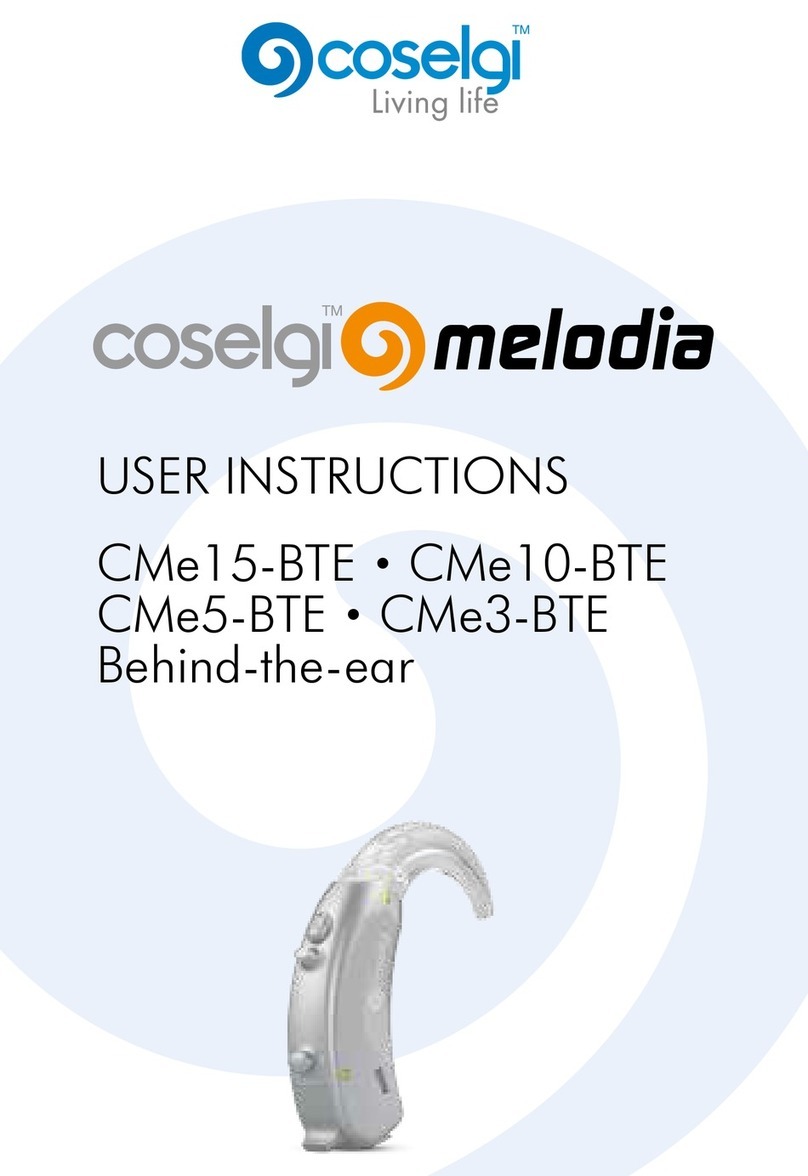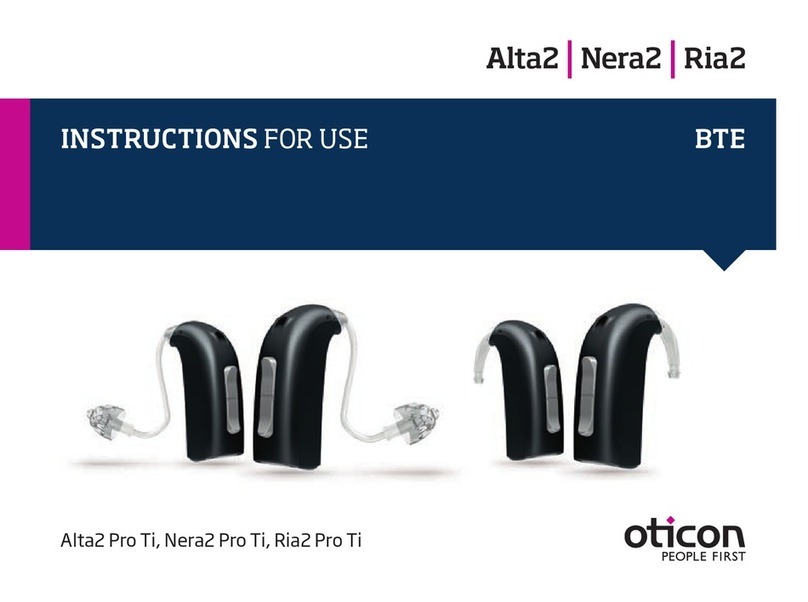CONTENTS
YOUR HEARING AID................................................................................6
Welcome...........................................................................................................6
Important safety information.........................................................................8
THE HEARING AID.................................................................................10
Indications for use..........................................................................................10
Intended use...................................................................................................10
The battery......................................................................................................10
Sound signals..................................................................................................12
How to tell right from left..............................................................................13
Turning the hearing aid on and off...............................................................13
Putting on and removing your hearing aid.................................................14
Sound adjustment..........................................................................................15
Programs.........................................................................................................16
CLEANING............................................................................................. 18
Tools.................................................................................................................18
Cleaning...........................................................................................................18
The wax guard................................................................................................ 21
ACCESSORIES.......................................................................................24
Accessories.....................................................................................................24
TROUBLESHOOTING.............................................................................25
4
